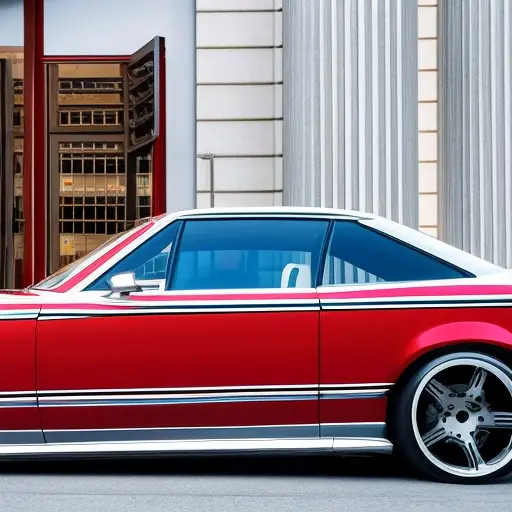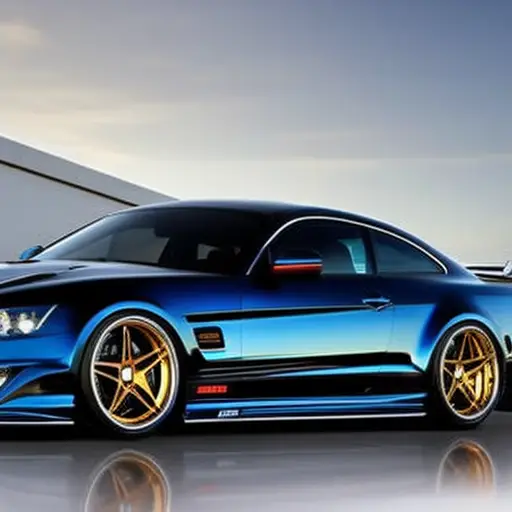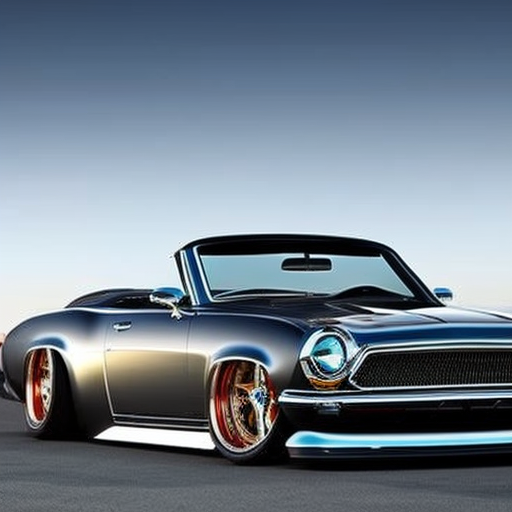Legal Considerations in Car Modifications

In an automotive realm where personalization is celebrated, a cautionary undertone underscores the legal considerations in car modifications. While enthusiasts eagerly pursue enhancements, the intersection of creativity and conformity demands attention.
This article navigates the legal landscape surrounding exhaust system upgrades, lighting modifications, and other alterations, shedding light on the ramifications and compliance requirements. Understanding the legal framework is paramount for enthusiasts seeking to customize their vehicles without running afoul of the law.
Exhaust System Upgrades
When considering exhaust system upgrades for your vehicle, it is crucial to ensure compliance with local emission regulations and noise ordinances. Many jurisdictions have specific laws regarding the maximum allowable decibel levels for exhaust noise and the use of aftermarket mufflers. It is essential to research and understand these regulations before making any modifications to your vehicle’s exhaust system.
Exhaust noise regulations typically specify the maximum allowable sound levels that a vehicle’s exhaust system can produce. These limits are put in place to minimize the impact of excessive vehicle noise on the environment and the community. Violating these regulations can result in fines, citations, or even vehicle impoundment in some cases.
In addition to exhaust noise regulations, many areas also have specific muffler regulations that restrict the use of aftermarket mufflers or the modification of existing muffler systems. Some jurisdictions require that any aftermarket mufflers meet certain noise reduction standards and are certified for use on road vehicles.
Before making any changes to your vehicle’s exhaust system, it is imperative to familiarize yourself with the local exhaust noise and muffler regulations to ensure that your modifications are in compliance with the law.
Lighting Modifications
When it comes to making modifications to a car’s lighting system, it is crucial to consider the legal requirements regarding brightness and color. Understanding the specific laws and regulations surrounding lighting modifications can help ensure compliance and avoid potential legal issues.
Additionally, it’s important to be aware of how modifications to the lighting system may impact the vehicle’s warranties.
Legal Brightness Requirements
The legal brightness requirements for lighting modifications in car modifications must comply with state and federal regulations to ensure safety and visibility on the road. Brightness standards are set to ensure that modified headlights provide adequate illumination without causing glare or being excessively dim.
Headlight regulations specify the minimum and maximum brightness levels allowed for aftermarket modifications. It’s crucial for car modifiers to adhere to these standards to avoid potential legal consequences and ensure that the modified lighting enhances visibility without blinding other drivers.
Understanding and meeting these legal brightness requirements is essential for a successful lighting modification that complies with the law while improving the functionality of the vehicle.
Now, let’s delve into the subsequent section about ‘color restrictions and laws.’
Color Restrictions and Laws
Color restrictions and laws pertaining to lighting modifications in car modifications are subject to state and federal regulations, and compliance with these standards is essential for legal and safe operation on the road. When it comes to custom paint or vehicle wraps, it’s important to ensure that the color of the lighting does not interfere with the required visibility of signals.
Color changing lights are a popular modification, but it’s crucial to be aware of the specific color restrictions in different states to avoid legal issues. Additionally, window tinting restrictions vary by state and must be considered when making modifications.
It’s advisable to thoroughly research the laws and regulations regarding color restrictions and lighting modifications in the state where the vehicle will be used to stay compliant and ensure safe driving.
Modification Impact on Warranties
Compliance with state and federal regulations regarding lighting modifications in car customization is essential to avoid potential impacts on warranties. Some manufacturers may void warranty coverage if the car’s lighting system has been altered without their approval. Therefore, it’s crucial to consider the implications for warranty coverage when modifying car lighting. It’s important to seek manufacturer’s approval or use components that are specifically designed and approved for the vehicle. Failure to adhere to these guidelines could result in the denial of warranty claims related to the vehicle’s lighting system.
To ensure warranty protection, it’s advisable to consult with the vehicle manufacturer or authorized dealers before making any lighting modifications.
Engine Performance Enhancements
The enhancement of engine performance in vehicles raises important legal considerations.
One crucial aspect is the potential impact on warranties, as modifications may void certain warranties provided by manufacturers.
Additionally, modifications to engine performance can also affect emissions compliance, which is an important regulatory consideration for vehicle owners.
Warranty Implications for Modifications
Frequently, car owners may wonder about the potential impact on their warranty when considering engine performance enhancements as part of car modifications. When it comes to warranty implications for modifications, it’s important to consider the following:
-
Warranty coverage: Modifying the engine for enhanced performance may void certain aspects of the manufacturer’s warranty, particularly if the modification is found to be the cause of a subsequent mechanical issue.
-
Manufacturer approval: Some manufacturers offer performance enhancement packages or have approved aftermarket modifications that do not void the warranty. It’s crucial to check with the manufacturer to ensure that any modifications are within the approved guidelines.
-
Professional installation: Having engine performance enhancements installed by a certified professional may help in maintaining warranty coverage, as it ensures proper installation and adherence to manufacturer guidelines.
Emissions Compliance and Modifications
When modifying car engines for enhanced performance, ensuring compliance with emissions regulations is essential to adhere to legal requirements and environmental standards.
Vehicle safety and environmental impact are crucial factors to consider when making engine performance enhancements. Modifying the engine to increase power output can potentially impact the vehicle’s emissions levels. Therefore, it is important to ensure that any modifications made do not exceed the legal emission limits set by regulatory authorities.
Failure to comply with these regulations can result in legal consequences and may also have a detrimental effect on the environment.
It is advisable to consult with a certified mechanic or automotive engineer to ensure that any modifications made to the engine are in compliance with emissions regulations while maintaining vehicle safety and minimizing environmental impact.
Body and Exterior Alterations
Body and exterior modifications to a vehicle must comply with legal regulations and safety standards. When considering alterations to a vehicle’s body and exterior, it’s important to ensure that the changes not only enhance the vehicle’s aesthetics but also adhere to legal requirements. Here are some key points to consider:
-
Body Design: Any alterations to the vehicle’s body design should not compromise the structural integrity or safety features of the vehicle. It’s essential to ensure that any modifications comply with the relevant safety standards and do not obstruct the driver’s visibility or impede the functionality of essential components such as lights and indicators.
-
Paint Customization: Custom paint jobs can significantly enhance the appearance of a vehicle. However, it’s crucial to use automotive-grade paints that meet environmental regulations. Additionally, any modifications to the vehicle’s paintwork should not obscure registration or identification markings, as these are essential for legal and safety purposes.
-
Legal Compliance: Before making any body or exterior alterations, it’s important to research and understand the legal requirements and regulations related to vehicle modifications in your jurisdiction. This includes ensuring compliance with laws regarding bumper height, fender flares, and other exterior modifications to avoid any legal issues.
Suspension and Handling Modifications
Suspension and handling modifications must be executed in compliance with legal regulations and safety standards to ensure the vehicle’s performance and safety are not compromised. When it comes to tire upgrades, it’s essential to adhere to alignment regulations to maintain road legality. Upgrading to larger tires can improve traction and handling, but it’s critical to ensure that the new tires comply with local laws regarding tire size and tread depth. Additionally, proper wheel alignment is crucial to prevent uneven tire wear and maintain stable handling.
Handling improvements should also be approached with road legality in mind. Modifying suspension components such as springs, shocks, and sway bars can enhance a vehicle’s handling characteristics. However, it’s vital to ensure that these modifications comply with regulations governing ride height, suspension stiffness, and other relevant factors. Any adjustments should not compromise the vehicle’s ability to navigate road obstacles and maintain stability at high speeds.
Legal Requirements for Aftermarket Parts
In the realm of car modifications, compliance with legal requirements for aftermarket parts is essential for ensuring vehicle safety and adherence to regulatory standards. When considering aftermarket parts for your vehicle, it’s crucial to be mindful of the following legal requirements:
-
Smog Testing: Many states have strict regulations regarding vehicle emissions. Aftermarket parts such as catalytic converters and exhaust systems must meet specific emissions standards to pass smog testing. It’s important to ensure that any aftermarket parts installed are compliant with these regulations to avoid potential legal issues.
-
Noise Restrictions: Aftermarket exhaust systems and mufflers are common upgrades for car enthusiasts, but they must comply with noise regulations. Different states have varying noise restrictions, and it’s imperative to verify that any modifications adhere to these standards to prevent citations and fines.
-
Safety Standards: Certain aftermarket parts, such as suspension components and lighting modifications, must meet safety standards to ensure they do not compromise the vehicle’s safety features or visibility.
Understanding and adhering to these legal requirements for aftermarket parts is essential to avoid legal repercussions and ensure compliance with regulatory standards.
This consideration is crucial not only for legal compliance but also for insurance implications, which will be discussed in the subsequent section.
Insurance Implications
When considering car modifications, it is important to be aware of the insurance implications that may arise due to aftermarket parts. Policy implications and coverage considerations play a crucial role in understanding how car modifications can affect insurance.
Aftermarket parts can impact the cost of insurance premiums and the extent of coverage provided by an insurance policy. When modifying a car, it is essential to notify the insurance provider about any changes made to the vehicle. Failure to disclose modifications can result in the denial of coverage or the invalidation of the insurance policy. Additionally, some modifications may increase the risk associated with the vehicle, leading to higher premiums.
Understanding the policy implications of car modifications is important to ensure that the vehicle remains adequately protected. Coverage considerations also come into play when modifying a car. Certain aftermarket parts may not be fully covered by a standard insurance policy. It is important to review the policy and discuss coverage options with the insurance provider to ensure that the modifications are adequately protected.
Failure to secure appropriate coverage for aftermarket parts may leave the vehicle owner financially vulnerable in the event of an accident or damage. Therefore, it is crucial to carefully consider the insurance implications of car modifications to avoid potential issues with coverage.
Frequently Asked Questions
Can I Legally Modify My Car to Make It Louder With an Aftermarket Exhaust System?
Modifying your car with an aftermarket exhaust system to increase noise may have legal implications. Consider noise pollution and environmental impact, as well as public safety and community regulations before proceeding with any modifications.
Are There Specific Rules and Regulations Regarding the Use of Aftermarket Lighting Modifications on My Car?
When considering aftermarket lighting modifications for your vehicle, it’s important to be aware of the legality and safety implications. Headlight tinting should comply with regulations to ensure visibility, while underglow lighting must adhere to enforcement measures for road safety.
How Do Engine Performance Enhancements, Such as a Turbocharger or Supercharger, Impact My Car’s Emissions and Environmental Regulations?
Engine performance enhancements, like turbochargers or superchargers, can significantly impact air quality and environmental regulations. An environmental impact assessment is crucial to understand the implications. It’s ironic how boosting power can lead to greater environmental responsibility.
What Are the Legal Considerations for Altering the Body and Exterior of My Car, Such as Adding a Custom Paint Job or Body Kit?
Custom paint jobs and body kits can enhance a car’s aesthetic appeal. However, altering a vehicle’s body and exterior may have legal implications and must comply with modification safety regulations to ensure roadworthiness and compliance.
Are There Any Specific Legal Requirements or Restrictions for Suspension and Handling Modifications, Such as Lowering the Car or Adding Aftermarket Suspension Components?
When making tire modifications, legality is crucial. Suspension height regulations vary by jurisdiction and can impact handling and safety. It’s important to research and comply with local laws to ensure a smooth and legal customization process.
Conclusion
In the intricate web of car modifications, navigating legal considerations is crucial. Like a skilled craftsman weaving a tapestry, each modification must be carefully considered within the framework of the law. From exhaust system upgrades to suspension modifications, each alteration must adhere to legal requirements.
The implications on insurance and potential legal ramifications further emphasize the importance of understanding the legal landscape of car modifications. It is akin to walking a tightrope, where balance and precision are paramount.





